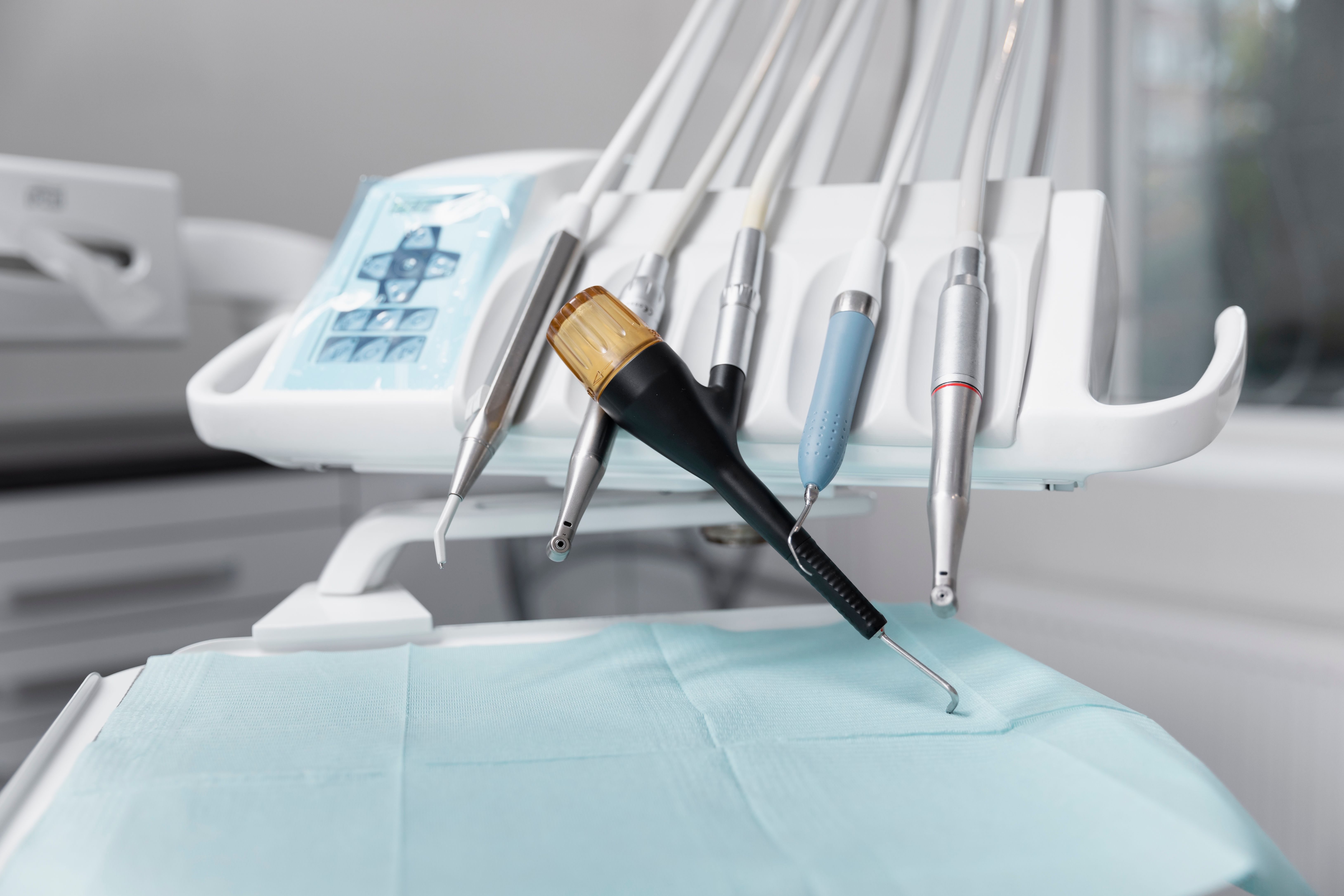Adult Orthodontics: Minimizing Treatment Time with Accelerated Techniques
Dr. Hoss Abar
In orthodontics, it's often believed that achieving a beautiful, straight smile is lengthy and time-consuming. Traditionally, adult orthodontic treatments have been associated with a significant time commitment, requiring patients to wear braces or aligners for an extended period. However, advancements in orthodontic technology have paved the way for accelerated techniques that minimize treatment time without compromising effectiveness.
This blog post highlights advanced techniques that can effectively minimize the treatment duration. We will explore the benefits of reducing treatment time, discuss various accelerated techniques employed by orthodontists, and address the key factors influencing their success.
What are Accelerated Techniques in Adult Orthodontics?
Accelerated techniques in adult orthodontics refer to innovative methods that aim to reduce the overall treatment time for patients seeking orthodontic correction. These techniques are designed to expedite the movement of teeth and facilitate the alignment process, resulting in faster results than traditional orthodontic approaches. Following are some standard accelerated techniques:
- Propel Orthodontics: Propel Orthodontics utilizes micro-osteoperforation to accelerate tooth movement. During the procedure, small, controlled holes are made in the bone around the teeth, stimulating the body's natural healing response and increasing the rate of tooth alignment. Orthodontists perform Propel Orthodontics with braces or aligners to reduce treatment time.
- AcceleDent: AcceleDent is a device that employs cyclic forces to accelerate tooth movement. It consists of a mouthpiece that patients bite into for 20 minutes each day. The device generates gentle vibrations, stimulating the surrounding bone and enhancing the orthodontic treatment process.
- Wilckodontics (Accelerated Osteogenic Orthodontics - AOO): Wilckodontics combines orthodontic treatment with a minor surgical procedure to accelerate tooth movement. During the process, small cuts are made in the gum tissue and bone surrounding the teeth. This allows for faster tooth movement by stimulating bone remodeling. Wilckodontics typically involves more complex orthodontic cases and may involve a longer recovery time than other accelerated techniques.
- High-frequency Vibrational Devices: High-frequency vibrational devices like OrthoPulse emit low-level vibrations to the teeth and surrounding bone. These vibrations help enhance the cellular response, leading to faster tooth movement and reduced treatment time.

These innovative techniques can significantly reduce treatment time, providing adults a more efficient path to achieving their desired smiles. It's important to note that the suitability and effectiveness of these accelerated techniques may vary depending on individual cases and treatment goals. Consulting with an experienced orthodontist is crucial to determine the most appropriate accelerated technique for each patient's needs.
Factors Affecting the Success of Accelerated Techniques
Several factors can influence the success of accelerated techniques in adult orthodontics. While these techniques can significantly reduce treatment time, it's essential to consider various aspects that may impact their effectiveness. The following are the factors that may affect the success of accelerated techniques:
- Treatment Complexity: The complexity of the orthodontic case plays a role in determining the suitability and success of accelerated techniques. Certain cases, such as severe malocclusions or extensive dental misalignments, may require more comprehensive orthodontic treatment and may not be ideal for accelerated techniques alone. Orthodontists will assess each patient's needs and determine the most appropriate approach for their case.
- Patient Compliance: Patient compliance and adherence to treatment protocols are vital for the success of accelerated techniques. Patients should understand and commit to the recommended guidelines provided by their orthodontist to ensure the effectiveness of the accelerated technique. Following the prescribed treatment plan, such as wearing aligners or using devices consistently, is crucial to achieving the desired results.
- Oral Health: Good oral health, including accelerated techniques, is essential for successful orthodontic treatment. A healthy oral environment promotes optimal tooth movement and ensures the longevity of treatment outcomes. Patients with existing oral health issues, such as gum disease or untreated cavities, may need to address these concerns before undergoing accelerated treatment.
- Skeletal Maturity: The skeletal maturity stage can influence accelerated techniques' success. Skeletal maturity allows for better predictability of tooth movement and reduces the risk of relapse. Orthodontic treatment is generally more effective when performed after the completion of growth in the jawbones. Orthodontists will assess the skeletal maturity of adult patients to determine the appropriate timing for accelerated techniques.
- Technique Selection: Choosing the most suitable accelerated technique for each patient's case is crucial for success. Different methods may have varying levels of effectiveness depending on the specific orthodontic issues and individual patient factors. Experienced orthodontists will evaluate patients' needs, preferences, and clinical characteristics to select the most appropriate accelerated technique for optimal treatment outcomes.
- Orthodontist's Expertise: The expertise and experience of the orthodontist performing the accelerated technique are essential factors in achieving successful outcomes. Choosing a qualified and experienced orthodontist is vital for the success of accelerated techniques. Orthodontists specializing in accelerated techniques will have the necessary training, knowledge, and skills to implement these methods and monitor treatment progress effectively.
Who is a Good Candidate for Accelerated Treatment in Adult Orthodontics?
Accelerated treatment in adult orthodontics can suit many patients who desire faster results and shorter treatment duration. Although every situation is unique, certain factors suggest a person is an appropriate candidate for expedited treatment.
- Time Constraints: Adults with busy lifestyles or specific events, such as weddings or job changes, may benefit from accelerated treatment.
- Mild to Moderate Orthodontic Issues: Accelerated techniques are often most effective for mild to moderate orthodontic cases, such as crowding, spacing, or malocclusions. You may be a good candidate for accelerated treatment if your orthodontic concerns fall within this range.
- Good Oral Health: Prioritizing oral health, including accelerated techniques, is essential for orthodontic treatment. Candidates should have a healthy mouth, free from significant dental issues such as gum disease or untreated tooth decay.

- Commitment to Treatment: Accelerated techniques typically require consistent compliance and adherence to treatment protocols. Patient cooperation is crucial for the success of accelerated treatment.
- Skeletal Maturity: Accelerated treatment in adult orthodontics is generally more successful when performed after the completion of growth in the jawbones. Orthodontists will assess each patient's skeletal maturity to determine the most appropriate timing for accelerated treatment. The bones must be fully developed to ensure stability and reduce the risk of relapse.
- Realistic Expectations: Candidates must have realistic expectations regarding the results and limitations of accelerated treatment. While these techniques can significantly reduce treatment time, they may not be suitable for complex orthodontic cases that require more comprehensive approaches. An open and honest discussion with the orthodontist will help set realistic expectations.
Safety and Risks Associated with Accelerated Techniques
Accelerated techniques in adult orthodontics are generally safe when performed by qualified orthodontists. However, it's essential to be aware of potential risks and considerations associated with these techniques. Here are some key points regarding safety and risks:
- Tissue Irritation: Some accelerated techniques, such as Wilckodontics or micro-osteoperforation, involve creating small perforations or incisions in the gum tissue or bone. In some cases, this can cause temporary tissue irritation or discomfort. However, these effects are generally minimal and resolved quickly.
- Root Resorption: Accelerated tooth movement can potentially increase the risk of root resorption, a process in which the roots of the teeth shorten. While this risk exists with any orthodontic treatment, including traditional methods, it is essential for orthodontists to closely monitor the movement of teeth and assess the risk of root resorption throughout treatment.
- Gum Recession: In some instances, accelerated techniques may slightly increase the risk of gum recession, mainly if the tissues are already thin or compromised. Orthodontists take precautions to minimize this risk and closely monitor the health of the gums during treatment.
- Treatment Discomfort: Accelerated techniques may cause temporary discomfort or soreness. Patients may experience initial pain as the teeth and surrounding tissues adjust to the accelerated forces applied. However, these sensations typically subside within a few days.
- Treatment Suitability: Not all patients or cases are suitable for accelerated techniques. In some cases, traditional orthodontic methods may suit you instead. The orthodontist will assess each patient's unique situation, considering factors such as the severity of the orthodontic issues, oral health, and skeletal maturity.
Patients must communicate openly with their orthodontist, discussing any concerns or questions about the safety and risks associated with accelerated techniques. Orthodontists will provide detailed information and guidance while prioritizing patient safety and well-being.
Conclusion
In conclusion, accelerated techniques in adult orthodontics offer a promising solution for those seeking faster results and shorter treatment duration. These techniques utilize various mechanisms and principles to enhance the process of tooth movement. While they can significantly reduce treatment time, it's essential to consider factors affecting their success.
With expert advice and an experienced orthodontist, you can confidently embark on an accelerated orthodontic journey toward a healthier, straighter smile.
Contact your Pinole dentist, Dr. Hoss Abar, DDS, MSD at Abar Orthodontics, to learn more about Adult Orthodontics.
Resource:
Adult Orthodontics: What are my treatment options?
*This media/content or any other on this website does not prescribe, recommend, or prevent any treatment or procedure. Therefore, we highly recommend that you get the advice of a qualified dentist or other medical practitioners regarding your specific dental condition*
More To Explore
About Us
We believe that every patient deserves to feel confident about their smile. Years of experience creating beautiful and flawless smiles.
Opening Hours:
Monday - Thursday: 8:00 AM - 5:00 PM
Friday: 8:00 AM - 12:00 PM
Saturday - Sunday: Closed
Abar Orthodontics, Pinole, CA
1500 Tara Hills Drive., Suite 204
Pinole, CA 94564
Abar Orthodontics, San Leandro, CA
145 East 14th street., #100
San Leandro, CA 94577
© 2026Abar Orthodontics | All rights reserved | Powered by:Vigorant, Inc.
